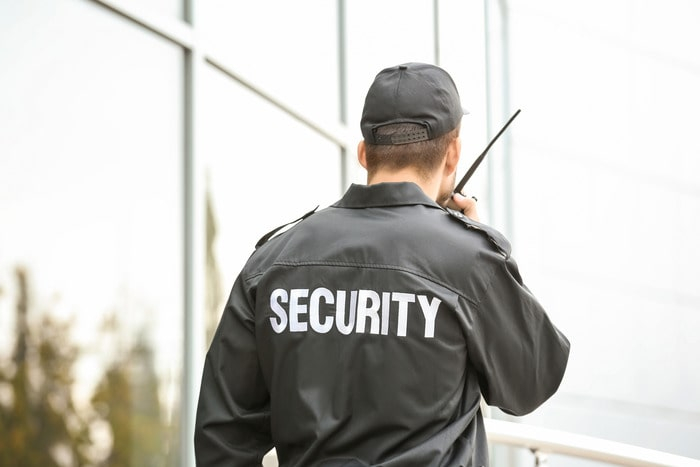Retail security is a crucial aspect of running a successful business, whether you operate a small boutique or a large department store. Theft, fraud, and security breaches can result in significant financial losses and harm your reputation. By implementing robust security measures, businesses can prevent losses, enhance customer trust, and create a safer shopping environment. This article explores the best retail security practices for businesses of all sizes, covering physical security, employee training, technological solutions, and crime prevention strategies.
Conduct a Comprehensive Security Assessment:
Before implementing any security measures, it’s essential to conduct a thorough risk assessment of your retail store. Identify weak points such as poorly lit areas, blind spots in surveillance, and unsecured entrances. Small businesses may have limited security budgets, so prioritizing the most vulnerable areas is crucial. Larger retailers should invest in professional security consultants to evaluate and optimize security protocols.
Install a High-Quality Surveillance System:
One of the most effective deterrents against theft is a well-placed surveillance system. Security cameras should be installed at entrances, exits, cash registers, and aisles with high-value merchandise. Modern surveillance systems offer high-definition video, remote monitoring, and AI-powered analytics that can detect suspicious behavior. For small businesses, investing in a few strategically placed cameras can be cost-effective, while large retailers should use an integrated system that covers the entire store.
Implement Strong Access Control Measures:
Restricting unauthorized access to certain areas of your store can significantly improve security. Small businesses can use keypad locks for stockrooms, while larger retailers may benefit from access control systems that require employee ID badges or biometric authentication. Additionally, limiting the number of employees who have access to sensitive areas reduces the risk of internal theft.
Train Employees on Security Awareness:
Employees play a vital role in retail security. Training staff to recognize suspicious behavior, handle shoplifters, and follow emergency procedures is essential. Topics to cover include:
Identifying common shoplifting tactics
Proper cash handling procedures to prevent fraud
Reporting and responding to security incidents
Customer service techniques that discourage theft
Regular training sessions ensure that employees remain vigilant and up to date on security best practices.
Use Security Personnel for Larger Stores:
Hiring security guards is a practical option for large retail stores with high foot traffic. Security personnel can monitor surveillance feeds, patrol the store, and respond quickly to security incidents. For small businesses that cannot afford full-time security guards, hiring off-duty police officers during peak shopping seasons can be an effective deterrent.
Implement Anti-Shoplifting Measures:
Retail theft is a common challenge for businesses of all sizes. Some proven anti-shoplifting strategies include:
Electronic Article Surveillance (EAS): Using security tags and alarm gates to prevent merchandise theft.
Locked Display Cases: Storing high-value items such as electronics and jewelry in secured cases.
Customer Interaction: Training employees to greet and assist customers, which discourages potential shoplifters.
Signage: Posting signs that warn of surveillance and shoplifting penalties.
Small businesses may focus on customer engagement and manual checks, while larger stores should use technology to track and prevent theft.
Strengthen Cybersecurity for Retail Transactions:
With the rise of digital payments and e-commerce, protecting customer data is just as important as securing physical merchandise. Retailers should:
Use secure payment processing systems to prevent credit card fraud.
Implement firewalls and encryption to safeguard customer data.
Educate employees on phishing scams and cybersecurity threats.
Regularly update point-of-sale (POS) software to fix security vulnerabilities.
Small businesses can use secure cloud-based POS systems, while larger retailers may require dedicated IT security teams to manage cybersecurity risks.
Monitor Inventory and Conduct Regular Audits:
Inventory shrinkage from theft, fraud, and administrative errors can be minimized through proper inventory management. Implementing inventory tracking software helps businesses identify discrepancies early. Regular audits ensure that stock levels match sales records, reducing the risk of undetected losses.
Establish Emergency Response Procedures:
Retail businesses must prepare for emergencies such as theft, violent incidents, or natural disasters. Every store should have a detailed emergency response plan that includes:
Evacuation procedures
Incident reporting protocols
Communication plans for contacting law enforcement
Employee training on handling security threats
Larger stores may require dedicated security teams and regular emergency drills, while smaller businesses can collaborate with local law enforcement to develop response plans.
Use AI and Smart Technology for Enhanced Security:
Advancements in AI and smart technology have revolutionized retail security. Businesses can now leverage:
Facial recognition software to identify known shoplifters.
AI-driven video analytics to detect suspicious behavior.
RFID tracking to prevent inventory loss.
Smart alarms and motion sensors to secure after-hours premises.
While these solutions may require a significant investment, the long-term benefits in loss prevention and security efficiency make them worthwhile, especially for larger retailers.
Final Thought:
Retail security guard is an ongoing process that requires a combination of physical security measures, employee awareness, and technology-driven solutions. Small businesses can focus on cost-effective strategies like staff training, surveillance cameras, and customer engagement, while larger businesses should invest in advanced security systems and professional security personnel. By implementing these best practices, retailers can minimize risks, protect their assets, and provide a safe shopping experience for customers and employees alike.

